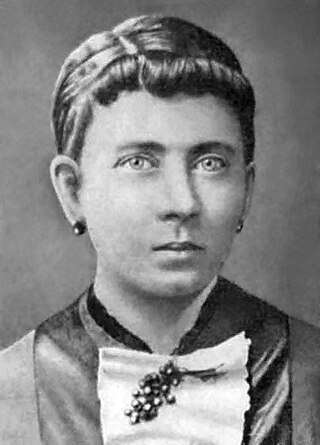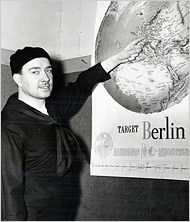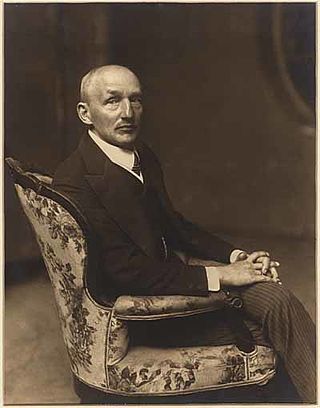
Berchtesgaden is a municipality in the district Berchtesgadener Land, Bavaria, in southeastern Germany, near the border with Austria, 30 km (19 mi) south of Salzburg and 180 km (110 mi) southeast of Munich. It lies in the Berchtesgaden Alps. South of the town, the Berchtesgaden National Park stretches along three parallel valleys.

The Berghof was Adolf Hitler's holiday home in the Obersalzberg of the Bavarian Alps near Berchtesgaden, Bavaria, Germany. Other than the Wolfsschanze, his headquarters in East Prussia for the invasion of the Soviet Union, he spent more time here than anywhere else during his time as the Führer of Nazi Germany. It was also one of the most widely known of his headquarters, which were located throughout Europe.

Alois Hitler was an Austrian civil servant in the customs service, and the father of Adolf Hitler.

Angela Maria "Geli" Raubal was an Austrian woman who was the half-niece of Adolf Hitler. Born in Linz, Austria-Hungary, she was the second child and eldest daughter of Leo Raubal Sr. and Hitler's half-sister, Angela Raubal. Raubal lived in close contact with her half-uncle Adolf from 1925 until her presumed suicide in 1931.

Paula Anna Maria Wessely was an Austrian theatre and film actress. Die Wessely, as she was affectionately called by her admirers and fans, was Austria's foremost popular postwar actress.
Maria Anna Schicklgruber was the mother of Alois Hitler, and the paternal grandmother of Adolf Hitler.

Klara Hitler was the mother of Adolf Hitler, dictator of Nazi Germany from 1933 to 1945. According to the family physician, Eduard Bloch, she was a quiet, sweet, and affectionate person. In 1934, Adolf Hitler honored his mother by naming a street in Passau after her.

William Patrick Stuart-Houston was a British-American entrepreneur and the half-nephew of Adolf Hitler. Born and raised in the Toxteth area of Liverpool to Adolf's half-brother Alois Hitler Jr. and his Irish wife Bridget Dowling, he later relocated to Germany to work for his half-uncle before returning back to London and later emigrating to the United States, where he received American citizenship and ended up serving in the United States Navy against his half-uncle and Nazi Germany during World War II, changing his surname after the war.

Bridget Elizabeth Hitler, née Dowling, was Adolf Hitler's half sister-in-law via her marriage to Alois Hitler Jr. She was the mother of Alois Hitler's son William Patrick Hitler. She was born and raised in Dublin, Ireland.

Angela Franziska Johanna Hammitzsch was the elder half-sister of Adolf Hitler. She was the mother of Geli Raubal by her first husband, Leo Raubal Sr.
Johann Nepomuk Hiedler was the maternal great-grandfather and possibly also the paternal grandfather of Adolf Hitler.

Döllersheim is an abandoned village in the Austrian state of Lower Austria, located in the rural Waldviertel region about 110 km (68 mi) northwest of Vienna. It was evacuated in 1938 to make way for a Wehrmacht training ground. Since 1 January 1964 it has been a Katastralgemeinde of the Pölla municipality in the Zwettl District.

Brigitte Hamann was a German-Austrian author and historian based in Vienna.

The Castle in the Forest is the last novel by writer Norman Mailer, published in the year of his death, 2007. It is the story of Adolf Hitler's childhood as seen through the eyes of Dieter, a demon sent to put him on his destructive path. The novel explores the idea that Hitler was the product of incest. It forms a thematic contrast with the writer's immediately previous novel The Gospel According to the Son (1999), which deals with the early life of Jesus. It received a good deal of praise, including a glowing review from Lee Siegel of The New York Times Book Review, and was the New York Times Bestseller for 2007.

Weitra is a small town in the district of Gmünd in the Austrian state of Lower Austria.
The Hitler family comprises the relatives and ancestors of Adolf Hitler, an Austrian-born German politician and the leader of the Nazi Party, who was the dictator of Germany, holding the title Chancellor of Germany from 1933 to 1945, and head of state as Führer und Reichskanzler from 1934 to 1945. Adolf Hitler had a central role in the rise of Nazism in Germany, provoking the start of World War II, and holding ultimate responsibility for the deaths of many millions of people during the Holocaust.
Leo Rudolf Raubal Jr. was an Austrian half-nephew of Adolf Hitler who served in the German Luftwaffe during World War II.

Stefanie Rabatsch was an Austrian woman who was allegedly an unrequited love of then-teenage Adolf Hitler, a claim made by Hitler's childhood friend August Kubizek. Her Jewish-sounding maiden name, Isak, has been subject to speculation in this context. However, there is no evidence apart from Kubizek that Hitler ever had such an attachment.

Heinrich Knirr was an Austrian Empire-born German painter, known for his genre scenes and portraits, although he also did landscapes and still-lifes. He is best known for creating the official portrait of Adolf Hitler for 1937 and is the only artist known to have painted Hitler in person.
Hitler is a German surname. It is strongly associated with the Nazi leader Adolf Hitler. After World War II, many people born with the surname legally changed their surname. Adolf's family used several varieties of the surname. The spelling 'Hitler' was relatively new.















